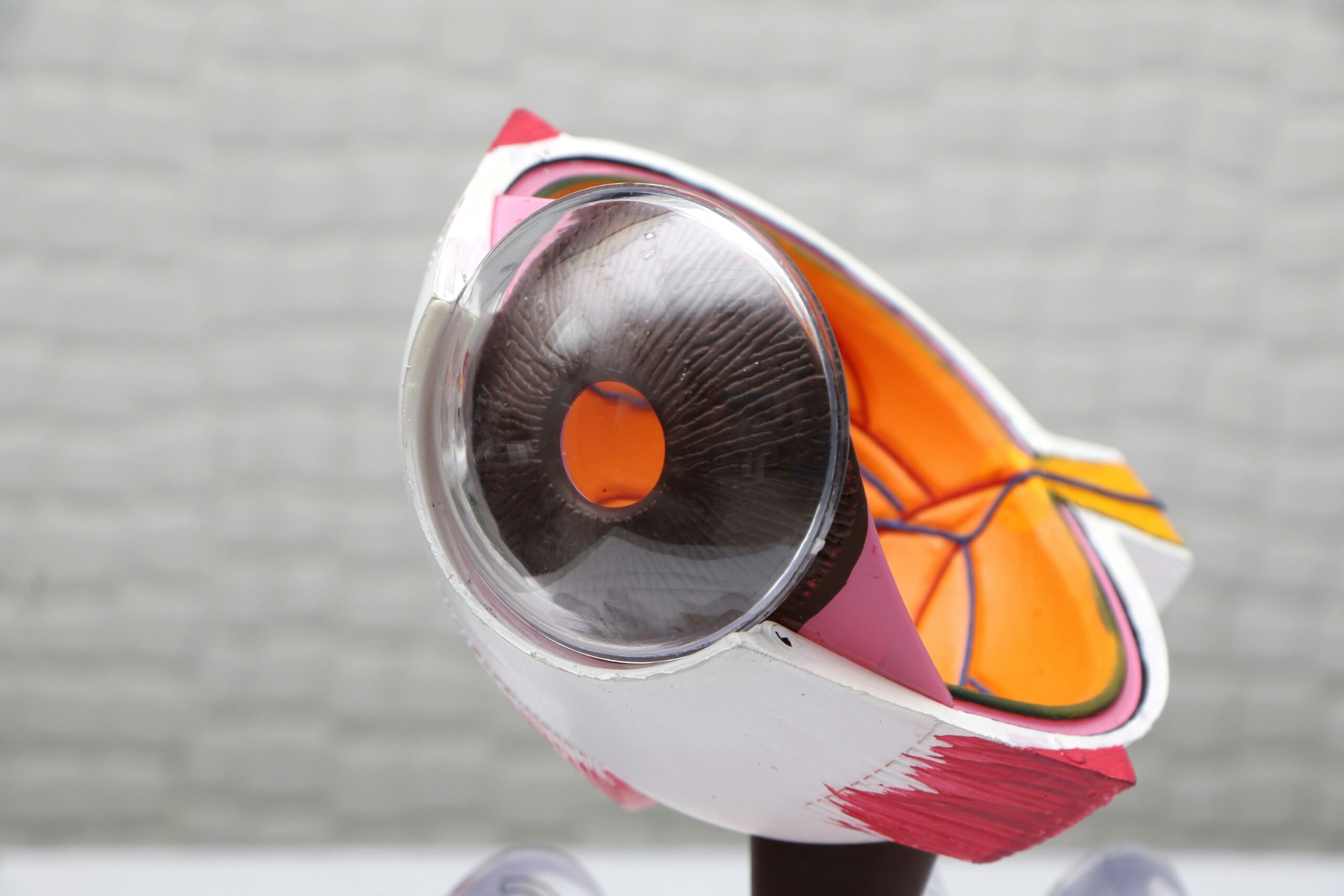Have you ever wondered how military optics are able to reduce glare and improve visibility in challenging environments? One key element that plays a crucial role in achieving this is lens coatings. Lens coatings are specially designed layers that are applied to the surface of military optics to enhance their performance. By reducing glare, lens coatings not only improve the clarity of vision but also provide a tactical advantage on the battlefield. In this article, we will explore the role of lens coatings in reducing glare in military optics and how they contribute to enhanced visual capabilities for soldiers in the field. So, let’s delve into the fascinating world of lens coatings and discover their importance in military optics.

Understanding Lens Coatings
Basics of Lens Coatings
Lens coatings play a crucial role in improving the performance of optical devices, especially in military optics. These coatings are thin layers of materials that are applied to the surface of lenses to enhance their functionality. Understanding the basics of lens coatings is essential to comprehend their role in reducing glare and improving overall optical performance.
Types of Lens Coatings
There are several types of lens coatings, each designed for specific purposes. Anti-reflective coatings, scratch-resistant coatings, anti-glare coatings, water and oil repellent coatings, thermal and ultraviolet resistant coatings are among the most common types used in military optics. Each type of coating addresses different challenges and contributes to reducing glare in its unique way.
How Lens Coatings Work
Lens coatings work by manipulating the behavior of light that interacts with the lens surface. For instance, anti-reflective coatings are designed to minimize the amount of light reflected off the lens surface, resulting in increased light transmission and reduced glare. Scratch-resistant coatings provide a protective layer that prevents scratches, maintaining the optical clarity of the lens. The different types of coatings work together to reduce glare and improve the optical performance of military optics.
The Challenge of Glare in Military Optics
Issues Caused by Glare
Glare can cause several issues in military optics, compromising the efficiency and effectiveness of soldiers in the field. Glare from the sun, bright lights, or reflective surfaces can obstruct vision, create visual distractions, and reduce situational awareness. In military operations, where split-second decisions can be a matter of life and death, eliminating or minimizing glare becomes paramount.
Impact of Glare in a Military Context
In a military context, glare can have severe consequences. It can compromise the accuracy of targeting systems, hinder the effectiveness of night vision equipment, and obstruct the ability to read critical information displayed on optical devices. Additionally, glare can reveal the position of military personnel, making them vulnerable to enemies. Therefore, reducing glare in military optics plays a vital role in ensuring mission success and the safety of soldiers.
Anti-Reflective Coatings and Glare Reduction
How Anti-Reflective Coatings Reduce Glare
Anti-reflective coatings are specifically formulated to reduce reflections and minimize glare. By optimizing the refractive index and thickness of the coating layer, these coatings effectively reduce the amount of light reflected off the lens surface. This results in improved light transmission, increased contrast, and enhanced image clarity. By reducing glare, anti-reflective coatings enable military personnel to maintain clear vision, even in challenging lighting conditions.
Military Applications of Anti-Reflective Coatings
In military optics, anti-reflective coatings are extensively used in a wide range of devices, including binoculars, telescopes, rifle scopes, and camera lenses. These coatings enhance the performance of these devices by minimizing glare, allowing soldiers to accurately identify targets, observe their surroundings, and gather critical intelligence. By improving visibility and reducing distractions caused by glare, anti-reflective coatings contribute significantly to the success of military operations.
Role of Scratch-Resistant Coatings on Military Lenses
Protection Offered by Scratch-Resistant Coatings
Lens durability is paramount in military optics, as soldiers often operate in demanding and rugged environments. Scratch-resistant coatings provide an additional protective layer to the lens surface, significantly increasing its resistance to scratches, abrasions, and other potential damage. By preserving the optical clarity of the lens, these coatings ensure that soldiers can rely on their equipment even in harsh conditions, without compromising their visual performance.
How Scratch-Resistant Coatings Minimize Glare
Scratches on lens surfaces can cause light to scatter, leading to increased glare and reduced image quality. By incorporating scratch-resistant coatings, the lens surface remains intact, preventing the scattering of light and minimizing glare. This allows military personnel to maintain clear vision and focus on their mission, unaffected by distracting glare caused by scratches or rough surfaces.

Impact of Anti-Glare Coatings in Low-Light Conditions
How Anti-Glare Coatings Improve Night Vision
In low-light conditions, such as during nighttime or dawn operations, glare can be particularly problematic. Anti-glare coatings are specifically designed to combat this issue. These coatings work by reducing stray light scatter, preventing unwanted reflections, and enhancing contrast in low-light environments. They allow military personnel to have improved night vision, enabling them to detect and identify targets more accurately, without being hindered by glare.
The Importance of Low-Light Visibility in Military Operations
Low-light visibility is crucial in military operations, where many missions take place under the cover of darkness. Whether conducting surveillance, infiltration, or covert operations, clear visibility in low-light conditions is essential for success and safety. Anti-glare coatings address this need by minimizing glare and improving night vision capabilities, ensuring that soldiers can operate with enhanced situational awareness and precision even in challenging lighting conditions.
Water and Oil Repellent Coatings
Purpose of Water and Oil Repellent Coatings
Water and oil repellent coatings are applied to military lenses to provide an added layer of protection against environmental factors. These coatings work by repelling water, oil, and other liquids, preventing them from adhering to the lens surface. By doing so, these coatings reduce the likelihood of smudges, fingerprints, and other contaminants that can obstruct vision and potentially cause glare. This ensures that military optics maintain their performance, even in wet or greasy conditions.
Effects of Repellent Coatings on Glare Control
Water and oil repellent coatings indirectly contribute to glare reduction by preventing the build-up of smudges, which can scatter light and cause glare. By repelling oils and liquids, these coatings keep the lens surface clean and free from contaminants that could compromise visibility. Consequently, military personnel can rely on lenses with superior optical clarity, unaffected by undesired glare caused by smudges or dirt.

Thermal and Ultraviolet Resistant Coatings
Benefits of Thermal and UV Resistant Coatings
Military optics often operate in extreme environments where they may be exposed to high temperatures and intense ultraviolet (UV) radiation. Thermal and UV resistant coatings are designed to withstand these conditions, providing protection to the lens and maintaining its optical performance. These coatings ensure durability, preventing the lens from degrading or warping due to extreme temperatures and shielding against harmful UV rays.
How these Coatings Contribute to Glare Reduction
Thermal and UV resistant coatings indirectly contribute to glare reduction by ensuring the durability and integrity of the lens. By preventing warping or degradation, these coatings maintain the lens’s smooth and optically clear surface, minimizing the chances of scattering light and causing glare. The preserved optical performance allows military personnel to rely on their equipment, even in high-temperature environments, without being hindered by distractions caused by glare.
Incorporating Multiple Coatings in a Single Lens
The Process of Applying Multiple Layers of Coatings
To maximize the benefits of lens coatings, multiple layers of different coatings can be applied to a single lens. Each layer serves a specific purpose, whether it is reducing glare, protecting against scratches, repelling water and oil, or resisting thermal and UV damage. The process of applying multiple layers involves careful deposition techniques to create a stack of coatings, each tailored to serve its unique function, resulting in lenses with superior optical performance and glare reduction capabilities.
Benefits of Multi-Coating in Glare Mitigation
By incorporating multiple coatings, each addressing a specific challenge, glare mitigation is significantly improved. Multi-coating offers a comprehensive solution to various sources of glare, providing enhanced visual performance in diverse lighting conditions. Military personnel can benefit from improved image contrast, reduced reflections, increased light transmission, and enhanced durability. The combination of multiple coatings in a single lens maximizes glare reduction capabilities, allowing soldiers to carry out their missions effectively in any environment.
Maintaining Optical Clarity in Harsh Conditions
Challenges to Lens Coatings in Extreme Environments
Military operations often take place in harsh and demanding environments, including extreme temperatures, high humidity, dust, and abrasive particles. These conditions can pose a significant challenge to lens coatings, potentially compromising their performance and effectiveness over time. Dust build-up, exposure to moisture, or physical contact can degrade the coatings, resulting in reduced glare reduction capabilities and overall optical clarity.
How Lens Coatings Preserve Clarity and Reduce Glare under Harsh Conditions
Lens coatings are designed to withstand and overcome challenges in harsh conditions. Whether it is scratch-resistant coatings protecting against physical damage, water and oil-repellent coatings preventing moisture or smudges, or thermal and UV resistant coatings resisting extreme temperatures and harmful radiation, these coatings preserve optical clarity even in the harshest environments. By maintaining their protective and glare-reducing properties, lens coatings ensure that military optics perform optimally and reliably, even under challenging circumstances.
Future Developments in Lens Coating Technology
Current Research into Advanced Lens Coatings
Ongoing research and development efforts continually push the boundaries of lens coating technology. Scientists and engineers are exploring new materials, deposition techniques, and innovative designs to further enhance the capabilities of lens coatings. Current research focuses on improving durability, increasing resistance to extreme conditions, enhancing anti-glare properties, and exploring novel applications of coatings in military optics. By staying at the forefront of technological advancements, lens coatings will continue to evolve, providing improved glare reduction and optical performance in the future.
Potential Impact of New Coating Technologies on Glare Reduction
Advancements in lens coating technology hold the promise of even greater glare reduction capabilities in military optics. By incorporating new materials that further minimize reflection, increase light transmission, and enhance durability, these coatings will offer superior optical performance in a wider range of lighting conditions. Additionally, emerging technologies such as nanocoatings and self-cleaning coatings may revolutionize the way lens coatings address glare reduction and maintain optical clarity. The potential impact of these new coating technologies on glare reduction in military optics is immense, ensuring that soldiers have the best possible equipment for their missions.
In conclusion, lens coatings play a vital role in reducing glare in military optics. With a variety of coatings available, including anti-reflective coatings, scratch-resistant coatings, anti-glare coatings, water and oil repellent coatings, thermal and UV resistant coatings, military personnel can rely on their equipment to maintain clear vision and focus, even in challenging lighting conditions and harsh environments. Ongoing research and advancements in lens coating technology will continue to enhance glare reduction capabilities, ensuring that military optics offer optimal performance and safety in the future.
